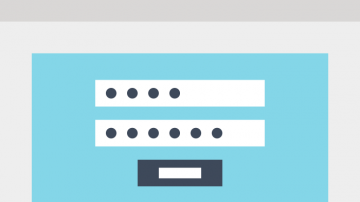In a previous blog post, we discussed the importance of understanding “What is WHMIS” and its relevance to workplace safety. Building upon that foundation, it is important for employers in Canada to be well-versed in the specific WHMIS requirements to ensure safety compliance in their workplaces.
WHMIS, which stands for Workplace Hazardous Materials Information System, is a comprehensive system designed to provide information about hazardous materials used in Canadian workplaces. Its main objective is to ensure the health and safety of workers by providing them with the necessary information to handle hazardous materials safely.
For those employing workers in Canada, understanding and complying with WHMIS requirements is not only a legal obligation but also a moral responsibility. WHMIS protocols help employers create a safer work environment, reduce the risk of accidents and injuries, protect the health of their employees, and safeguard their business from potential liabilities.
Understanding WHMIS Requirements for Canadian Employers
To ensure workplace safety and compliance, Canadian employers must adhere to key requirements outlined by the Workplace Hazardous Materials Information System (WHMIS). WHMIS is designed to protect workers from hazardous materials by providing essential information about the hazards associated with these materials.
Canadian Worker Education and Training
Under WHMIS regulations, employers have a legal obligation to provide comprehensive education and training to their employees regarding hazardous materials. This includes informing workers about the hazards present in their workplace, safe handling practices, the meaning of WHMIS labels and symbols, and the importance of safety data sheets (SDS). Regular training sessions should be conducted to ensure employees stay updated on the latest information and procedures.
Hazardous Product Labeling
Proper labeling is a crucial aspect of WHMIS. Employers are responsible for ensuring that all hazardous products in their workplace are appropriately labeled. Labels must display specific information such as the product identifier, hazard pictogram(s), signal word, precautionary statements, and supplier information. Clear and visible labels enable workers to quickly identify potential hazards and take appropriate precautions.
Utilize Safety Data Sheets (SDS)
Employers must obtain and maintain up-to-date safety data sheets for all hazardous materials used in their workplace. SDS contains detailed information about the properties, hazards, handling, and emergency response measures for each hazardous material. These sheets provide vital guidance and instructions to workers, first responders, and medical professionals in the event of an accident or exposure.
Common WHMIS Compliance Challenges for Employers
While striving to meet WHMIS requirements, Canadian employers may encounter several common challenges that can hinder their efforts toward full compliance. Identifying these challenges early on can help employers develop strategies to overcome them effectively.
Employee Resistance
One challenge employers often encounter is employee resistance to change or reluctance to follow new safety protocols. This resistance may stem from a lack of awareness or understanding of the importance of WHMIS compliance. To address this challenge, employers should prioritize comprehensive communication and education. Clearly explain the purpose, benefits, and legal obligations of WHMIS, and provide training sessions that emphasize the direct impact on employee health and safety. Encouraging open dialogue and involving employees in the development of safety protocols can also foster a sense of ownership and commitment.
Lack of Resources
Limited financial and human resources can pose a significant challenge for employers. Implementing WHMIS requirements may require investments in training programs, safety equipment, labeling materials, and other resources. To overcome this challenge, employers can explore cost-effective solutions, such as online training platforms or utilizing free resources provided by regulatory agencies. Prioritizing resource allocation and seeking external funding or grants specifically allocated for workplace safety initiatives can also help mitigate this challenge.
Navigating Regulatory Complexities
Navigating the complex landscape of WHMIS regulations and staying updated with any changes or updates can be overwhelming for employers. It is in an employer’s best interest to stay informed about federal, provincial, and territorial requirements to ensure compliance. Employers can subscribe to newsletters or websites that provide updates on WHMIS regulations and consult with safety compliance professionals or regulatory agencies for guidance. Developing a system to track and monitor regulatory changes and establishing clear communication channels within the organization will help ensure ongoing compliance.
Sustaining Compliance Over Time
Maintaining WHMIS compliance consistently can be a long-term challenge for employers. It requires ongoing commitment, regular training sessions, and periodic reviews of safety protocols and procedures. To sustain compliance, employers should establish a safety culture by integrating WHMIS requirements into daily operations and reinforcing safe practices through continuous communication and reinforcement. Conducting regular audits and inspections, seeking feedback from employees, and addressing any identified gaps promptly will help maintain a high level of compliance.
Help with Safety Training and WHMIS Compliance
Ensuring compliance with WHMIS requirements can be a complex task for employers. To navigate this process effectively and maximize workplace safety, it is valuable to seek assistance from experienced safety compliance consultants. These professionals bring expertise and guidance that can greatly support employers in meeting their WHMIS obligations.
Benefits of Working With Safety Compliance Consultants
- Expertise in WHMIS Regulations
Safety compliance consultants have in-depth knowledge of WHMIS regulations and keep up-to-date with any changes or updates. They understand the intricacies of compliance and can provide accurate guidance tailored to specific industries and workplaces. Their expertise ensures that employers have a comprehensive understanding of WHMIS requirements and can implement effective safety protocols.
- Customized Training Programs
Training employees on WHMIS requirements is a critical aspect of compliance. Safety compliance consultants can develop customized training programs that align with the specific hazards and needs of a workplace. These programs are designed to effectively educate employees on handling hazardous materials safely, recognizing potential risks, and responding to emergencies. By utilizing the expertise of these consultants, employers can deliver comprehensive and engaging training sessions that promote a culture of safety.
- Hazard Assessments and Risk Mitigation
Identifying and assessing workplace hazards is a fundamental part of WHMIS compliance. Safety compliance consultants can conduct thorough hazard assessments, helping employers identify potential risks associated with hazardous materials. Based on the assessment findings, consultants can provide recommendations and support in implementing control measures to mitigate risks effectively. This proactive approach enhances workplace safety and reduces the likelihood of accidents or incidents.
- Implementation of Effective Safety Protocols
Developing and implementing robust safety protocols is essential for WHMIS compliance. Safety compliance consultants can assist employers in creating and refining safety procedures and protocols specific to their workplaces. This includes establishing proper storage and handling practices, emergency response plans, and regular maintenance checks. By leveraging the expertise of consultants, employers can establish comprehensive safety protocols that align with WHMIS requirements and industry best practices.
Team Up With Industrial Compliance & Safety for WHMIS Compliance
WHMIS compliance should be a priority for all Canadian employers. Understanding and meeting WHMIS requirements are essential to ensuring the well-being of workers and promoting a culture of safety in the workplace. By seeking help from safety compliance consultants, overcoming challenges, conducting regular audits, and staying informed, employers can create a safe and healthy work environment. Industrial Compliance & Safety brings expertise in WHMIS regulations, develops customized training programs, conducts hazard assessments, and helps implement effective safety protocols. Our global experience and knowledge in industrial workplace safety include all aspects of industry regulation standards (ISNetworld®, Avetta®, PEC Safety®, BROWZ®, and many others).
Remember, WHMIS, ISNetworld®, Avetta®, and all industry regulatory compliance is an ongoing process that requires commitment and continuous improvement. Stay proactive, stay informed, and prioritize the well-being of your employees.
For more information and specific guidance related to your industry or workplace, consult with Industrial Compliance & Safety compliance professionals today.





